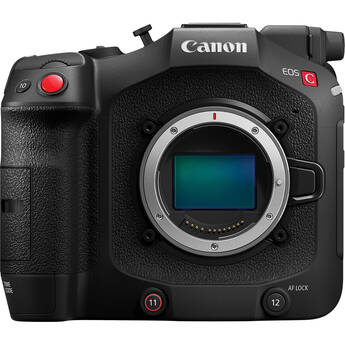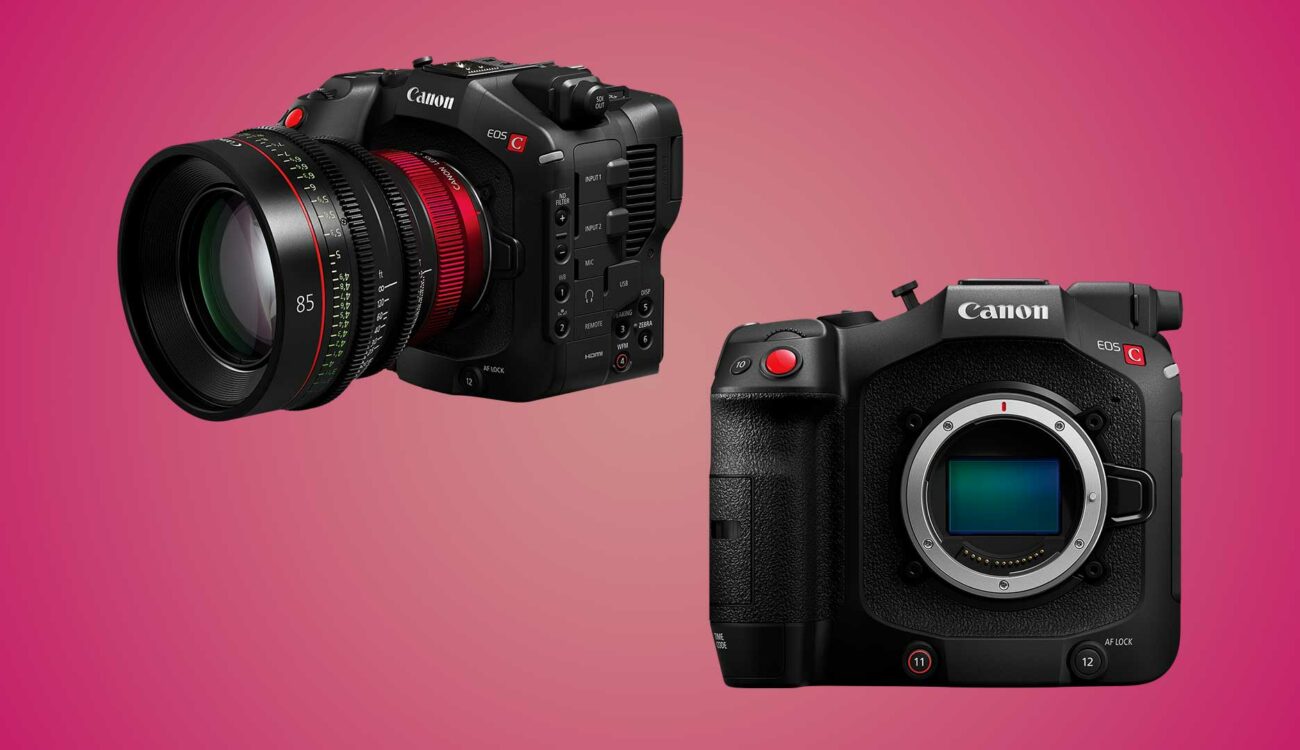
Ahead of IBC 2024, which starts this week, Canon has unveiled their latest Cinema EOS camera: the EOS C80 (watch our review if you missed it!). This compact unit has a similar form factor as the hugely popular EOS C70, but it boasts a new 6K full-frame BSI image sensor, it can shoot footage in 6K RAW at up to 30P, it has a triple base ISO, an improved autofocus system, one 12G-SDI and one full-size HDMI video outputs, a multi-function shoe, an Ethernet port, and internal WiFi. So, let’s take a closer look at it!
In September 2020, Canon released the EOS C70, one of their most compact Cinema Cameras to date. This little beast packs a ton of features in a very reasonable body, including internal ND filters, a reliable and efficient autofocus system, 4K 4:2:2 10-bit internal recording at up to 60P, and they even added 12-bit Cinema RAW Light internal recording via a free firmware update. I got two C70s at launch, and I couldn’t have been happier with these, as they nearly tick all the boxes. However, as no camera is perfect, I always wished the C70 had an EVF, an SDI output port, and maybe a larger image sensor.
Following the release of the Canon EOS C400 in June 2024, with shipping soon to commence, Canon is already back with a new model in their lineup based on the success of the EOS C70 and many features of the EOS C400: the EOS C80. And please make sure to head over to our full review including video of the camera here, in case you missed it.
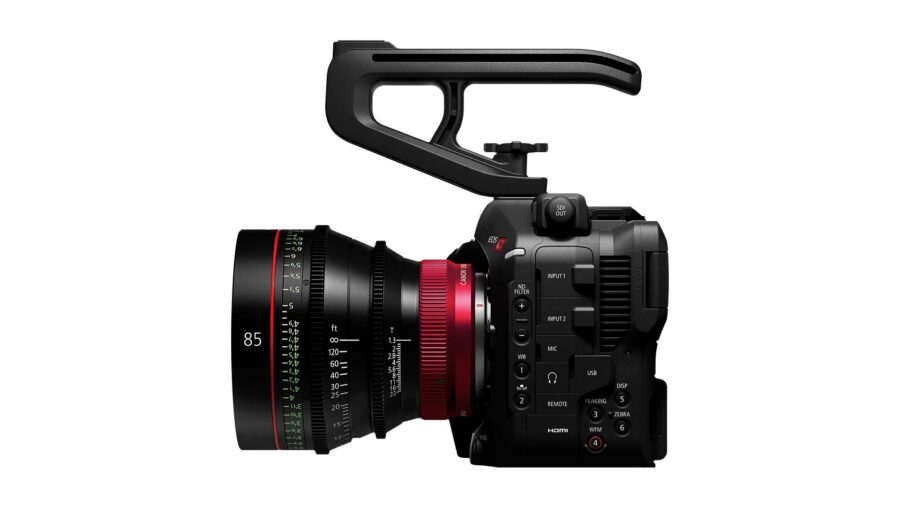
Canon EOS C80 – if it’s ain’t broken, don’t fix it
In many ways, the Canon EOS C80 can be considered the EOS C70’s big brother. Indeed, it has the same width and depth as the C70, respectively 160 x 116mm / 6.29 x 4.56in. However, thanks to the addition of a 12G-SDI output port on the top of the camera, it is slightly taller at 138mm/5.43in. Lastly, regarding weight, the EOS C80 is 1.31kg/2.88 lbs compared to 1.19kg/2.62 lbs. This compact size and weight means you can fly the EOS C80 on a compact gimbal like the DJI RS 3/4 Pro.
Canon R5 C Ultimate Video Manual
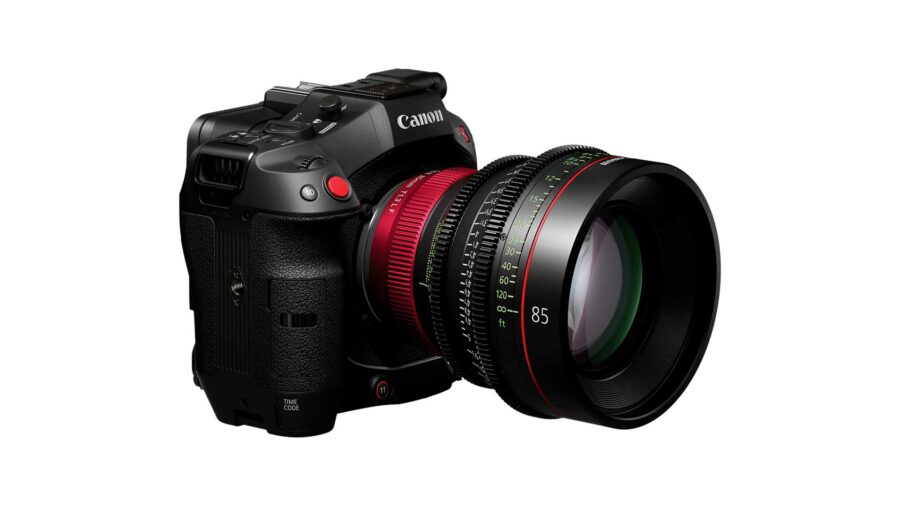
If you have ever used the EOS C70, you should feel perfectly at home with the C80 because it has a lot of similar features and only improves the existing:
- Internal ND filters up to 10 stops.
- A similar button layout.
- Two mini-XLR audio input ports, one 3.5mm microphone input, and one 3.5mm headphone output. Audio files are now recorded in 24-bit / 48 kHz instead of 16-bit.
- A USB-C port.
- One remote terminal.
- A full-size HDMI 2.0 video output port.
- A BNC timecode port is at the front of the camera.
- It records footage onto two SD UHS-II memory cards.
- No IBIS (in-body image stabilization) but Digital IS. Please note that Digital IS doesn’t work when shooting in Cinema RAW Light.
So, what does that new model bring to the table?
Canon EOS C80 – improvements and additions
One of the first things you’ll notice on the top side of the EOS C80 is the new addition of a 12G-SDI output port. There is still no EVF, but having a locking connector to connect to an external monitor or EVF, for example, is a much-welcomed addition.
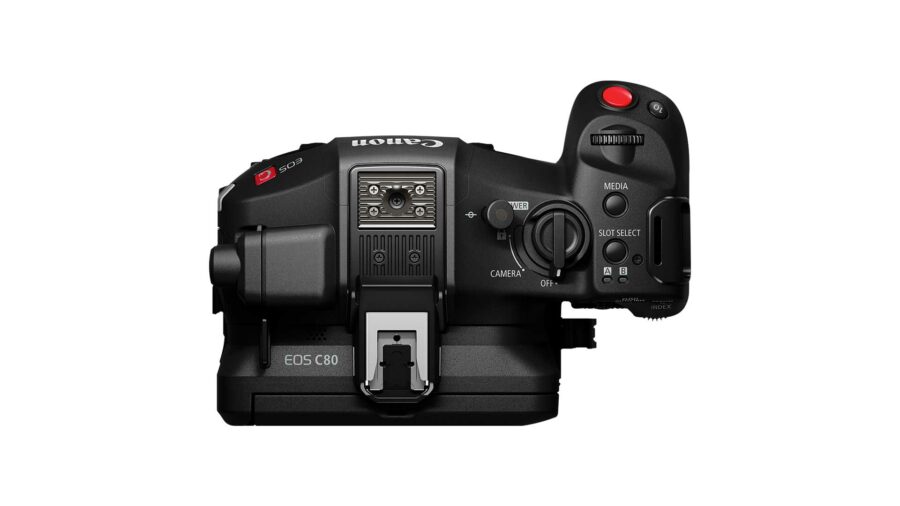
Next, on the top of the camera, the good old cold shoe has been replaced by a Multi-function shoe. This Multi-function shoe can provide power and communicate with external accessories directly from the camera without any cables. Multiple accessories are already compatible with the Multi-function shoe, such as the TASCAM CA-XLR-2d-C audio adapter and the Canon DM-E1D microphone.
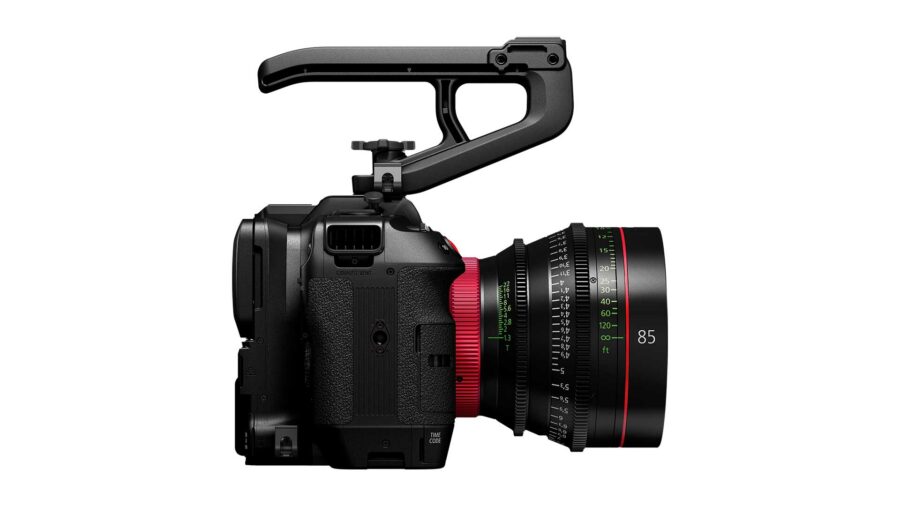
The camera comes with a removable top handle that has been redesigned; it is now much smaller and secured to the top of the camera via one 1/4 “-20 thumbscrew and Canon Anti-Twist ridges. Unlike the EOS C400, the EOS C80’s top handle doesn’t have a Multi-function shoe and will require an optional off-camera shoe card, codename OC-E4A. Also, similarly to the EOS C400, the EOS C80 uses new BP-A30N and BP-A60N batteries. It is compatible with the previous BP-A30/BP-A60 batteries, but it won’t provide power to the Multi-function shoe.
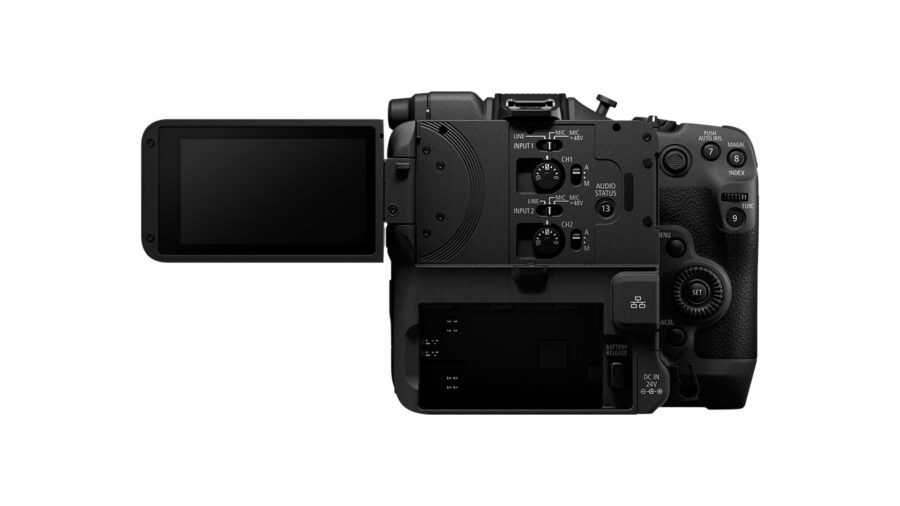
Next, Canon changed and relocated the joystick at the back of the camera. Canon claims that the 3.5-inch flip-out touchscreen display is now brighter and has a new panel lock mechanism to keep it open/closed. The EOS C70 LCD screen was hard to see in bright daylight and had hinge issues, so let’s hope these issues are now things of the past.
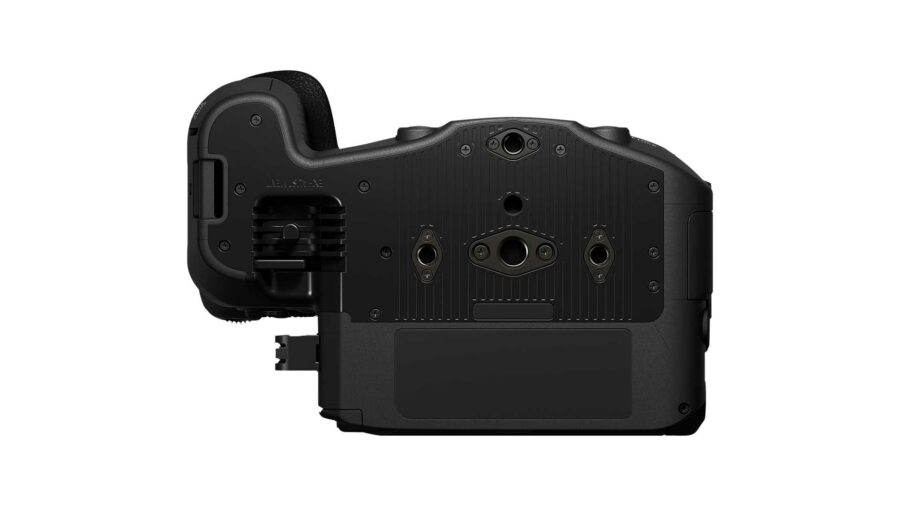
At the bottom of the camera, Canon added another 1/4 “-20 threaded hole aligned with the 3/8 “-16 mounting point, on top of the two side 1/4 “-20 mounting points. A 1/4 “-20 mounting point is still on the side grip for vertical shooting.
Lastly, the EOS C80 now has internal Wi-Fi and a built-in Ethernet port at the back of the camera. The EOS C80 has the same level of connectivity as the EOS C400, which means:
- The Ethernet port lets you connect the EOS C80 to the RC-IP1000/RC-IP100 remote controllers.
- Up to 20 cameras on a computer can be controlled via the Remote Camera Controller app via an Ethernet cable or Wi-Fi.
- The Canon Multi-Camera Control smartphone app allows you to connect up to four cameras for camera control wirelessly.
- You can use the Browser Remote app wired or wirelessly to control a single camera.
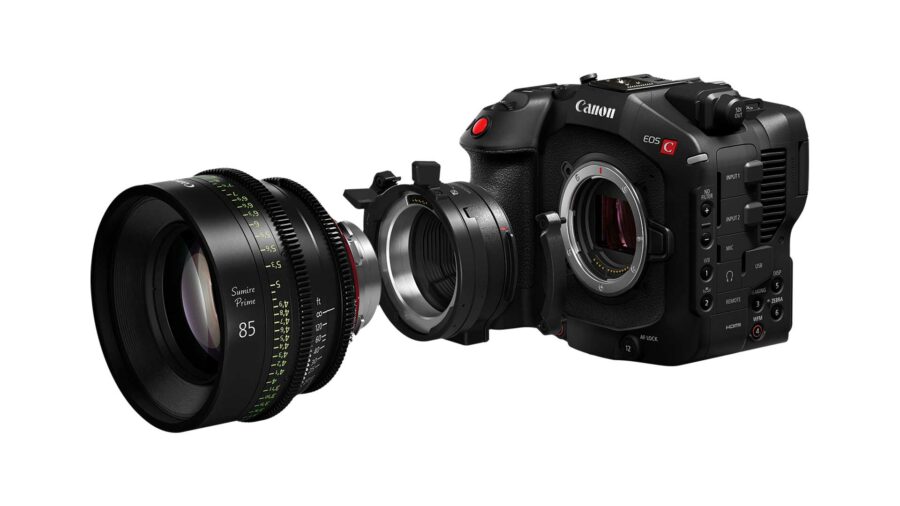
Canon EOS C80 – a mini Canon EOS C400?
The Canon EOS C80 shares many similarities with the EOS C400. Both cameras feature a 6K BSI stacked CMOS full-frame image sensor. Indeed, the EOS C80 no longer uses a DGO (Dual Gain Output) image sensor, and Canon claims up to 16 stops of dynamic range. According to Canon, the faster sensor readout should improve rolling shutter performances, as the EOS C80 doesn’t have a global shutter.
Furthermore, the EOS C80 will benefit from a native triple-base ISO. The ISO values are the same between the EOS C400 and EOS C80, meaning:
- Canon Log 2, Canon Log 3, or RAW: base ISO of 800, 3,200, and 12,800.
- Canon 709, BT.709 Wide DR, PQ, HLG: base ISO of 400, 1,600, and 6,400.
- BT.709 standard: base ISO of 160, 640 and 2,500.
An “Auto Selection” option automatically switches to and selects the best circuit for you in every Gamma setting.
In terms of recording formats, there is also a lot in common between the EOS C400 and EOS C80, including:
- 12-bit 6K 6000 x 3164 internal recording in Cinema RAW Light but “only” up to 30P instead of 60P for the EOS C400, with a bitrate of 639Mbps. The 6K Cinema RAW Light is limited to RAW LT mode. If you drop down the resolution to 4368 x 2304, you can crank up the frame rate to 60P.
- There are two new XF-HEVC S and XF-AVC S codecs, which have smaller file sizes and use the .MP4 file format, but have the same metadata/file name/folder structure as the Cinema RAW Light and XF-AVC files.
- You can shoot internally in XF-AVC in 10-bit 4:2:2 at up to 4K60P in Intra-Frame, and up to 120P in Long-GOP. All 4K non-RAW recorded files are oversampled from the full 6K image sensor with a full sensor readout.
- If you drop the resolution to 2048 x 1080 and 1920 x 1080 in 10-bit 4:2:2 XF-AVC format, you can reach the maximum framerate of the camera, which is 180P.
- A Long GOP 4:2:0 8-bit proxy option is also available.
The major difference between the EOS C400 and EOS C80 is around bitrates. Indeed, since the EOS C80 uses two SD UHS-II cards instead of CFexpress Type B cards, the maximum bitrate tops out at 639Mbps.
The two memory cards allow you to double record for safety but also to choose from a plethora of other dual-recording functions. Indeed, you can record in Cinema RAW Light on card A and XF-AVC/XF-AVC S/XF-HEVC S on card B. Next, you can record in Cinema RAW Light on one card and record a proxy on the other. Also, you can record 6K on one card and 4K on the other or choose a different interlaced/progressive option. You can even record in All-I on card A and Long-GOP on the other. You got it; the EOS C80 is a versatile camera with many recording options.
Autofocus capabilities
The Canon EOS C80 benefits from all the autofocus improvements that were introduced with the EOS C400. Indeed, it uses the same Dual Pixel CMOS AF II system with the EOS iTR AF X technology, which covers 100% of the image sensor and should be faster and more accurate compared to the EOS C70.
The camera can detect people and animals (dogs and cats), with eyes/faces/heads/bodies recognition for humans. The well-known “Face Priority” and “Face Only” options have been replaced with “Detection Priority” and “Detection Only,” and you now have 10 AF Speed settings and 7 Response settings to adjust the AF responsiveness to your needs. Lastly, it has new autofocus frame size options, including small and square zones, large zone vertical, and large zone horizontal.
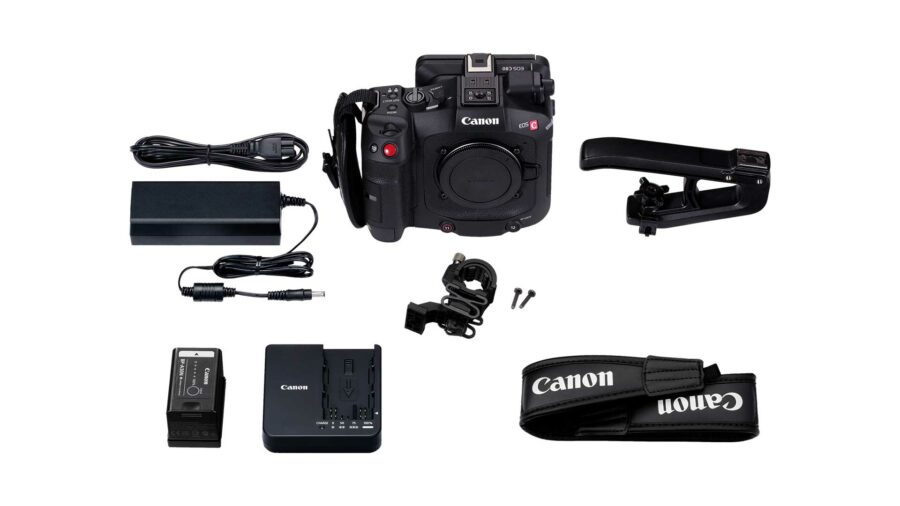
Price and availability
The Canon EOS C80 should start shipping in November 2024 but is already available for preorder for €5,899. The camera ships with the new top handle, a mic holder, a shoulder strap, one BP-A30N battery and charger, and the power adapter.
According to Canon, the EOS C80 sits below the EOS C300 Mark III and EOS C400 but just above the EOS C70. It’s interesting to note that the EOS CXX does not replace the EOS C70, the latest of which continues to exist in the lineup and be sold.
For more information, please visit Canon’s website here.
What do you think about this new Canon camera? Are you excited about it and considering upgrading to it? Does it solve most of the issues the EOS C70 had? Don’t hesitate to let us know in the comments below!








